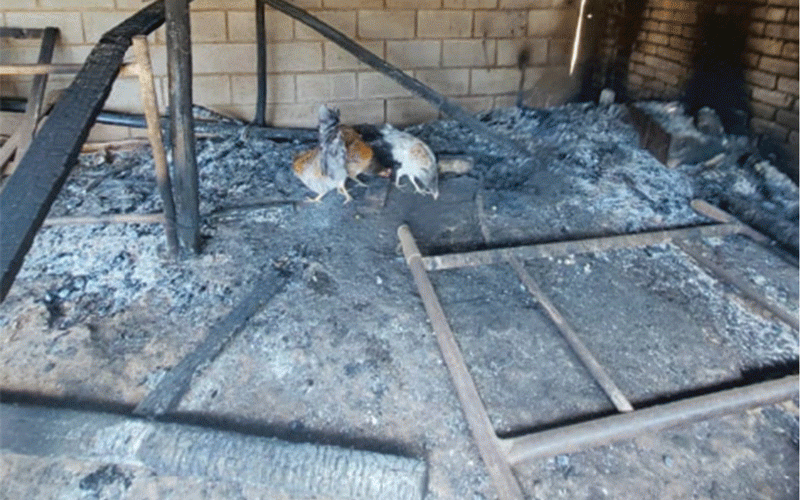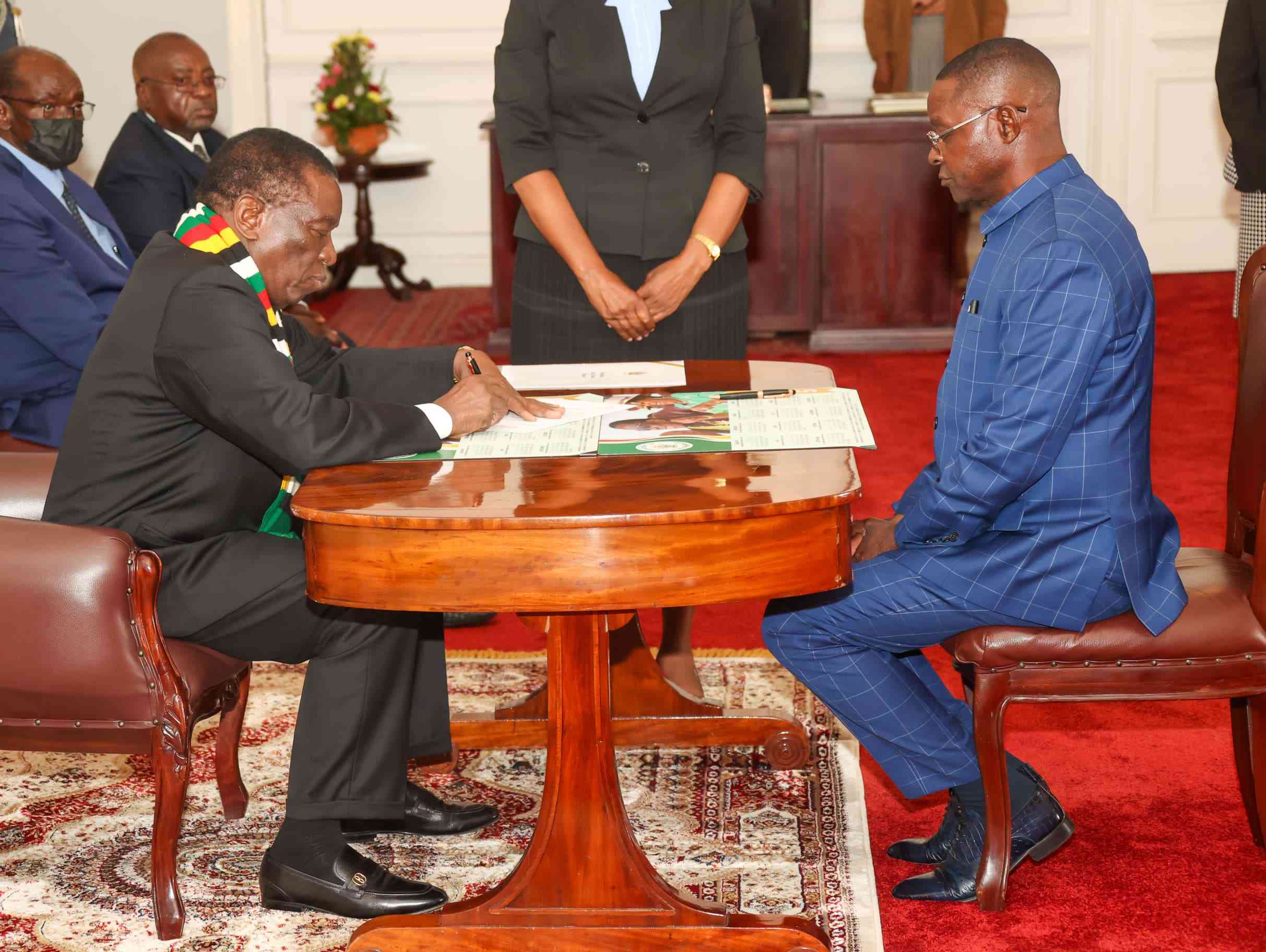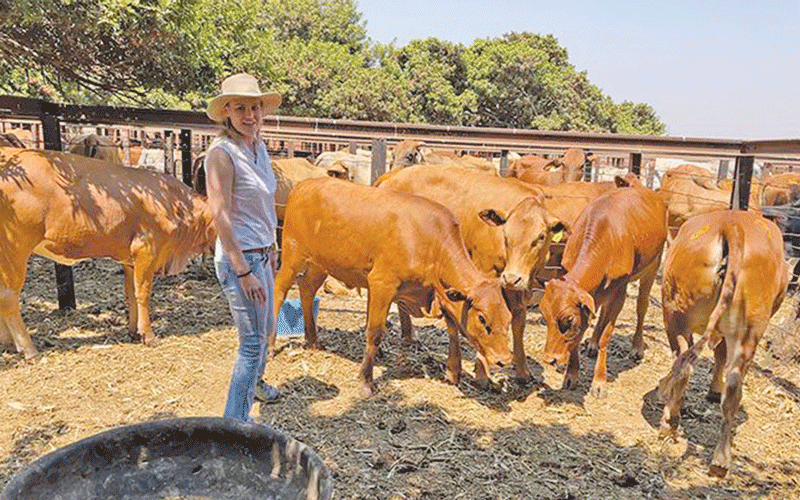FIVE years ago, Amelka Mlambo (44), a mother of four, would wake up long before the first light of dawn, the cold morning air biting at her skin.
The cockerels’ crow would be her alarm, and she would quickly stir from the warmth of her blanket to start her day.
Her life revolved around chores that were as demanding as they were endless.
Her mornings began by lighting the fire; crouching low as she blew into the embers of last night’s wood, coaxing them to life.
As the fire crackled to life, she would place her large pot on top, heating water to bath her children before sending them off to school.

Keep Reading
- COP26 a washout? Don’t lose hope – here’s why
- Out & about: Bright sheds light on Vic Falls Carnival
- COP26 a washout? Don’t lose hope – here’s why
- Out & about: Bright sheds light on Vic Falls Carnival
Fetching water was another demanding task. The nearest water source was a river almost 2km away. She made several trips with a bucket balanced on her head, often while nursing her youngest child on her hip.
There was no time to rest.
During the day, Mlambo worked tirelessly in her maize fields under the blazing sun, with only her aching body for company.
Her evenings were even more exhausting.
After sunset, the only light came from a paraffin lantern.Its dim, flickering flame barely enough for her children to finish their homework.
She worried about the long-term effects of the fumes and the strain it put on their eyes.
At night, as the village fell into silence, Mlambo would sit by the fire, hands raw from the long hours of household chores.
Now, her life has changed significantly after the installation of a 200kW solar mini-grid and green village model in her Hakwata village, bringing clean and reliable electricity to over 100 homes and businesses for the first time.
Now, the glow of electric bulbs lights up Mlambo’s home. The first morning after electricity arrived in the village felt like a dream. No longer did she rise to coax stubborn flames from dying embers.
Instead, with the flick of a switch, light filled the room and she could boil water with an electric kettle, freeing her from the suffocating smoke that had been her morning companion for years.
The days of walking to the river to fetch water have become a distant memory too, as the village installed water boreholes powered by electricity.
Mlambo now spends those precious hours tending to her garden or simply sitting with her children, watching them laugh and play.
Her children’s education has transformed.
In the evenings, they study under bright lights instead of huddling around the dim paraffin lamp.
There’s a small radio in the house now, and through it, they hear news of the world beyond the village—voices that spark conversations, dreams, and ideas that had once seemed unreachable.
Even after the hard work in the fields, there’s time to sit with her family, the gentle hum of the fridge or the sound of an electric fan making the house feel alive in a way she had never known.
At night, as she looks at her children reading, their faces illuminated by a steady, clean light, her heart swells with gratitude.
The endless grind of her life has softened, replaced with a new kind of hope.
The Hakwata green village model, valued at almost US$2 million, marks a significant leap towards Zimbabwe’s sustainable energy goals.
The Climate Adaptation, Water and Energy Project initiative is a result of a strong partnership between the British Government, the Government of Zimbabwe, and United Nations Development Programme (UNDP).
This US$13,6 million collaboration, funded by the British, aims to bring sustainable development to often-overlooked and remote rural areas.
The project, currently at 20% utilisation, powers 85 homes, 18 businesses, a school, a clinic, and three community boreholes, with ample capacity for future growth.
For years, the villagers in Hakwata lived in the “dark”, relying on firewood, kerosene and candles.
The environmental toll was clear: deforestation was rampant, and the once-thriving forest cover became sparse, threatening water sources and accelerating soil erosion.
As climate change worsened, rains became unpredictable, leading to poor harvests and food insecurity.
“"We were caught in a vicious cycle,” Edson Sithole, a local shopkeeper, explains.
“We didn’t have reliable electricity, so our businesses could only operate during the day.
“Without refrigeration, we couldn’t stock perishable goods, and as a result, we earned less. The nights were long and cold, and sometimes, you couldn’t even afford to keep the lamps on.”
For healthcare services, the situation was equally dire. Without reliable power, the local clinic had to turn away patients at night, and life-saving vaccines and medicines often spoiled due to a lack of refrigeration.
The community felt abandoned, vulnerable to the whims of a changing climate and an unreliable energy system.
“When the lights first came on, we couldn’t believe it,” Amelka says, smiling.
“For the first time, we had electricity that we didn’t need to struggle for. My children could study after dark, and we no longer feared fires from the kerosene lamps.”
The solar grid provides clean, renewable electricity to homes, schools, and local businesses. For many, it was a life-changing transformation. A nurse at a local clinic passionately spoke about the difference it has made for healthcare.
“We now have power at the clinic 24/7. I don’t have to worry about turning away women in labour at night or losing vaccines due to lack of refrigeration,” she said.
“We can now provide better healthcare for the community, no matter the time of day.”
The impact of the green village initiative has also extended to local entrepreneurs like Sithole, the shopkeeper.
“I now keep a refrigerator in my shop,” he said with pride.
“It may seem like a small thing, but now I can store cold drinks, milk and other perishables. Customers come from neighbouring villages because they know I have things they can’t get elsewhere.”
With reliable power, Sithole can run his shop longer, increasing his income and improving his family’s quality of life.
Other businesses, from grinding mills to welding workshops, have also flourished, creating new employment opportunities in the village.
What was once a sleepy community now buzzes with activity and optimism.
The green village project doesn’t stop at solar energy. Hakwata has also embraced biogas, a clean energy source that is generated from animal and organic waste.
Shamiso Mutasa, a cattle herder and farmer, talks about the transformation.
“We used to just throw away the dung from our animals. Now, it’s turned into biogas that we use for cooking. The smell is gone, and the smoke is gone. It’s cleaner, safer, and it’s saving our forests,” she said.
Before the introduction of biogas, Shamiso, like many women in the village, would spend hours each day gathering firewood.
Not only was this backbreaking work, but it also contributed to the loss of trees and biodiversity.
Now, with the biogas system in place, women like her have more time to focus on farming and other economic activities, while also reducing the environmental damage caused by deforestation.
“The best part is that the slurry from the biogas plant is used in my garden,” Shamiso added.
“My crops are growing better than ever, and I don’t need to buy expensive chemical fertlisers. It’s natural, and it’s right here in my backyard.”
The broader benefits of the green village initiative are clear. Beyond improving access to clean energy, it is helping the community build resilience to the impacts of climate change.
Climate-smart agricultural practices, such as water harvesting and the use of drought-resistant crops, have been introduced in Hakwata to address the increasingly erratic rainfall patterns.
Farmers are now equipped with the tools and knowledge to thrive in a changing climate.
“The green village project didn’t just give us electricity,” Amelka said.
“It gave us hope. Before, we felt helpless in the face of climate change. Now, we have the tools to fight back. We’re protecting our environment, and we’re building a better future for our children.”
British ambassador to Zimbabwe, Pete Vowles, who helped sponsor the project, expressed deep satisfaction with the results and revealed that it is being replicated in other provinces.
“When we supported this project, we saw it as an investment in Zimbabwe’s future, particularly in rural communities like Hakwata that are hardest hit by the effects of climate change,” he said.
“Seeing the transformation here, from improved healthcare to better education and thriving businesses, fills us with pride.”
The UNDP, which is the implementing partner for the green village initiative, has played a pivotal role in making this project a success.
UNDP resident representative Ayodele Odusola said the project had long-term benefits for people and the environment.
“The green village concept is about more than just providing electricity. It’s about creating self-sustaining, resilient communities that can thrive in the face of climate change,” he said.
“By introducing solar power and biogas, we’re not only reducing carbon emissions but also helping communities like Hakwata build a more sustainable and prosperous future. It’s a model that we hope to replicate across Zimbabwe and beyond.”
Added Odusola: “The villagers here are not just beneficiaries—they are key actors in this project. Their involvement and commitment have been crucial to its success.”
Energy and Power Development minister Edgar Moyo said using renewable energy in rural communities transforms lives.
“Projects like this one in Hakwata are critical in our push to provide sustainable and affordable energy to rural communities,” he said.
“By using clean energy, we are reducing our dependence on fossil fuels, addressing deforestation, and improving the livelihoods of our citizens.”





